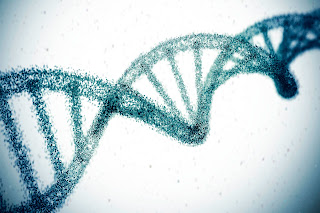Resurrecting species a thing in the world?
Couple weeks ago, scientist have found ways to resurrect extinct species, but with a twist. With the development of gene-editing technology like CRISPR, scientists have moved their focus away from cloning and toward genetic engineering as the most promising option for "de-extinction," or the resuscitation of extinct species. Genetic engineering, unlike cloning, would not produce an exact clone of an extinct species. “Instead, the approach would alter the genome of a living animal to resemble that of the targeted extinct animal,” as said by Anna Gibbs. The objective is to make that proxy as close as feasible to the extinct species. Researchers attempted to recover the genome of the Christmas Island rat to test the method's boundaries. The researchers was able to retrieve around "95 percent" of the extinct rat's genome by comparing bits of the ancient rat's genetic instruction book with the genome of a surviving relative, the Norway brown rat. That may not seem like a lot, but it implies that "5%" of the genome was still missing, including key important scent and immune system sections. Tom Gilbert and his colleagues extracted ancient DNA from two preserved skin samples of the Christmas Island rat to obtain the genome of the extinct rat. Ancient DNA is far from flawless, having been taken from specimens that died anywhere from a few decades to thousands of years ago. Gilbert compares the genome of an extinct species to a shredded book. Scanning the bits and comparing them to a reference is one technique to rebuild this torn book. Genes that were absent in part or entirely tended to be found in two primary areas that governed the rat's immunological responses and sense of smell. So, if the genome of a Norway brown rat was altered to resemble that of a Christmas Island rat, the new creature would smell differently than its predecessor as said in the article. If a proxy Christmas Island rat is reintroduced into its former habitat, this could jeopardize its chances of survival. Gilbert does not believe that anyone will attempt to resurrect a rat. However, he believes that what the team has shown could be valuable for individuals working on even more ambitious undertakings, such as resurrecting the woolly mammoth. Gilbert thinks that the difference between Norway rats and Christmas Island rat are similar to a woolly mammoth, and Asian elephants. Despite the challenges, Ben Novak, lead scientist at Revive & Restore, an organization that uses genetic engineering for conservation initiatives, believes that employing the technology to bring back species is still worthwhile. He intends to apply Gilbert's and colleagues' findings to his own research on the passenger pigeon, which died out in 1914. But, if a de-extinct were to happen, using gene editing with mammals, the outcome wouldn't exactly be a mammoth, it would be closed to a " hairy Asian elephant that is adapted to the cold. With opportunities opening up with resurrecting species, we may be closer to having extinct animals, being un-extinct, or creating a modify species.
Gibbs, Anna. “An Extinct Rat Shows CRISPR's Limits for Resurrecting Species.” Science News, 22 Mar. 2022, https://www.sciencenews.org/article/crispr-de-extinct-christmas-rat-species-gene-editing.
Press, Cell. “Forget Mammoths – These Scientists Are Working to Resurrect the Extinct Christmas Island Rat through DNA Editing.” SciTechDaily, 13 Mar. 2022, https://scitechdaily.com/forget-mammoths-these-scientists-are-working-to-resurrect-the-extinct-christmas-island-rat-through-dna-editing/.



Comments
Post a Comment